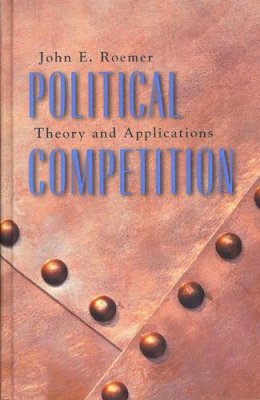12%OFF

Stock image for illustration purposes only - book cover, edition or condition may vary.
Political Competition
John E Roemer
€ 38.99
€ 34.17
FREE Delivery in Ireland
Description for Political Competition
paperback. Presents a unified and rigorous theory of political competition between parties. This book models the theory under many specifications, including whether parties are policy oriented or oriented toward winning, whether they are certain or uncertain about voter preferences, and whether the policy space is uni- or multidimensional. Num Pages: 352 pages, 46 line illustrations, 22 tables. BIC Classification: JPL. Category: (P) Professional & Vocational. Dimension: 131 x 230 x 19. Weight in Grams: 496.
In this book, John Roemer presents a unified and rigorous theory of political competition between parties. He models the theory under many specifications, including whether parties are policy oriented or oriented toward winning, whether they are certain or uncertain about voter preferences, and whether the policy space is uni- or multidimensional. He examines all eight possible combinations of these choice assumptions, and characterizes their equilibria.
He fleshes out a model in which each party is composed of three different factions concerned with winning, with policy, and with publicity. Parties compete with one another. When internal bargaining is combined with ... Read more
Product Details
Format
Paperback
Publication date
2006
Publisher
Harvard University Press United States
Number of pages
352
Condition
New
Number of Pages
352
Place of Publication
Cambridge, Mass, United States
ISBN
9780674021051
SKU
V9780674021051
Shipping Time
Usually ships in 7 to 11 working days
Ref
99-1
About John E Roemer
John E. Roemer is Elizabeth S. and A. Varick Stout Professor of Political Science and Economics at Yale University.
Reviews for Political Competition
Roemer characterizes—correctly—the traditional Downsian model of political competition as one modeling competition between ‘opportunistic politicians’ who themselves have no policy preferences and who choose instead to adopt positions that appeal to the preferences of the optimum number of voters. This, he says, is a misguided model, easy to use but empirically and theoretically inaccurate and producing meaningless results. He offers ... Read more
